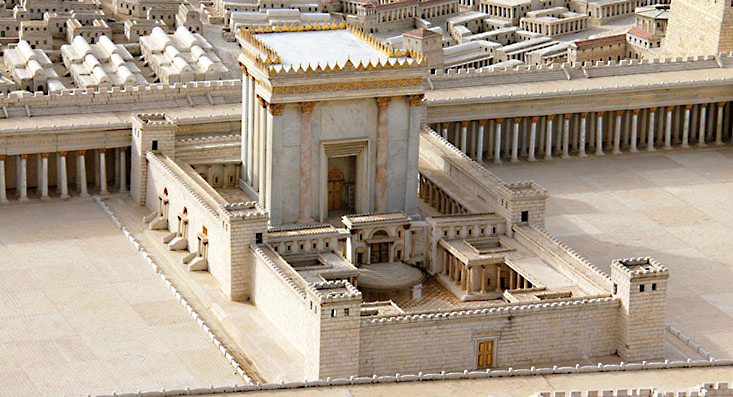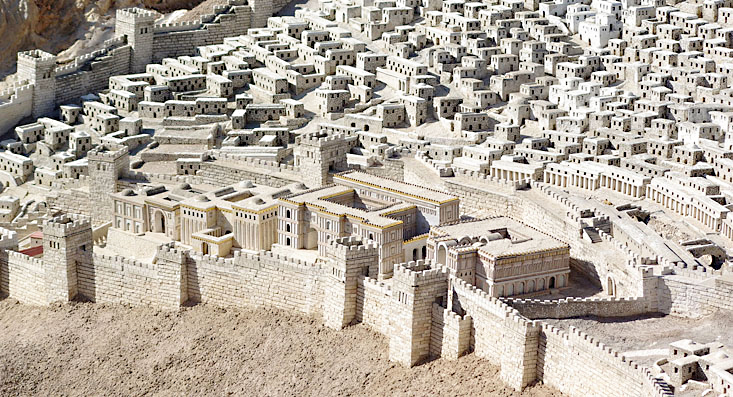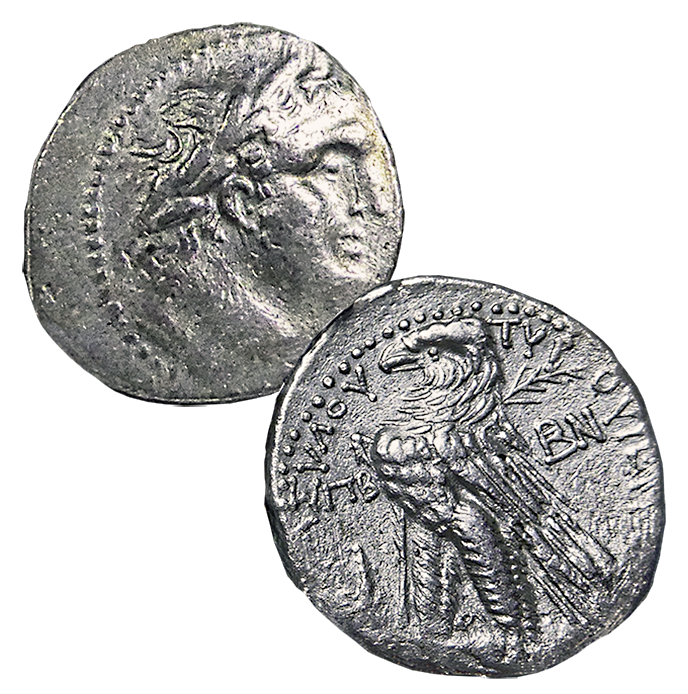
Bible, History, Archaeology
Bible,
History,
Archaeology
Money in the Temple
from Jerusalem
... Jesus entered the Temple. He drove out all those who sold and bought in the Temple, and overturned the tables of the money changers and the seats of the pigeon sellers... (Matthieu 21,12 ; Jean 2,14-15 ; Marc 11 ;15).
Historical background
Before the outbreak of what historians traditionally refer to as the «Jewish War» (or Great Revolt, from 66 to 73), abundant quantities of gold and, above all, silver were circulating in the Jerusalem Temple (Matthieu 23,16). Every Jew over the age of 20 was required to pay an annual tax in silver metal equivalent to half a shekel. This tax may date back to the time of Nehemiah (Nehemiah 10,33-34) and was based on a text from the Law (Exodus 30,11-16).
Image opposite: a model recreating the Temple erected by Herod the Great (Detail) at the Israel Museum, Jerusalem. © flik47.
Roman silver coins, such as the denarius bearing the effigy of Tiberius Caesar (see Tribute to Caesar), were notorious for misleading on their content, as they contained only 80% of silver value. And this despite the fact that the denarius was not only the standard for many currencies in the region, but also the currency of reference for the payment of taxes.
Issues of local currencies could only exist at the price of conditions set by Rome to its advantage, by undervaluing these local currencies. The Jewish law requirement for an annual tax did not allow the use of Roman coins, which were too weak in silver, even though they were commonly used in Judea for commercial transactions.
Image opposite: A model of Jerusalem in the time of Herod the Great (detail). Berthold Werner.
Better still, the Temple seems to have acquired an even more important economic and monetary status shortly before the war than some documents suggest. Indeed, the history of the silver tetradrachm or Tyrian shekel can be divided into two periods, one dating back to 19/18 BC, the other ending in 65/66 AD. Modifications distinguishing the two series can easily be seen from the year 108 of the city of Tyre's count, i.e. in the years -19/-18 of our Gregorian calendar.
The Tyre shekel
Influenced by Seleucid coins, these Tyrian coins feature an eagle on the reverse, but the inscription excludes any reference to a king. Instead, the name and titles of the city are engraved: «(of) Tyre the holy and inviolable». The head of the city's pantheon of divinities, Melkart-Heracles, replaces the royal bust on the obverse. Finally, the year is inscribed with a variety of monograms whose meaning is sometimes difficult to decipher.
This description raises the following question: how did the Jews agree to use a foreign currency featuring a pagan deity? Some historians ask: Is this one of the reasons why Jesus overturned the money-changers' tables (Marc 11,15) ?
The representation of a pagan deity does not seem to have posed a problem, as suggested by a passage in the Mishna: there is nothing impure about money itself, but it is the use to which it is put that can lead to impurity (Kelim 12,7).

Silver shekel from Tyre, year 82 (45/44 BC)
Obverse Head of the pantheon of deities of the city of Tyre, Melkart-Heracles. Laurel head to the right.
Revers : ΤΥΡΟΥ ΙΕΡΑΣ ΚΑΙ ΑΣΥΛΟΥ. Holy Tyre and “sacred” asylum.
Eagle standing left, talons on a ship's prow, a palm on its wing; in the left field, a club.
Private collection © Jean-Guy Kauffmann.
Shekels and half-shekels from Tyre were the only currency accepted at the Temple in Jerusalem. The annual tax paid by a Jew to the Temple was half a shekel. The Jews had no silver coins of their own throughout the period of the shekels and half-shekels of Tyre. But all Judean taxes had to be paid in shekels.
